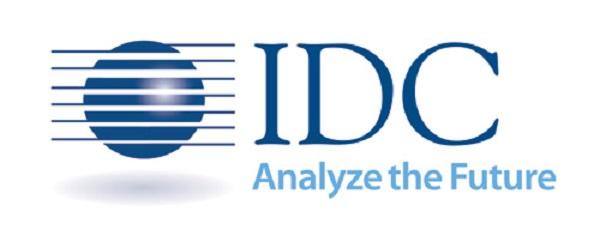
Middle East Hardcopy Peripherals (HCP) Market Suffers Slight Decline in Q1 2015
- The overall Middle East hardcopy peripherals (HCP) markets suffered a year-on-year decline in both volume and value in Q1 2015, according to the latest insights announced today by global technology consulting firm International Data Corporation (IDC). Just over a million units were shipped for a total value of $330 million, down 5.7% and 8.6%, respectively, although Saudi Arabia and the UAE both rode out low global oil prices to post strong unit growth year on year.
After a strong performance in most markets last year, 2015 began more cautiously as the full effects of lower global oil prices and currency fluctuations began to impact the HCP markets of the Middle East. Responsibility for the region's overall decline can be laid at the door of the Turkish and Egyptian markets, with the delay of purchases ahead of general elections in mid-June hindering the former and ongoing currency volatility hampering the latter.
"Despite the overall decline, shipments of mono laser devices remained flat year on year, indicating that demand from the SMB and enterprise segments of the market remains steady," says Roberto Alunni, research manager for imaging, printing and document solutions at IDC Middle East, Africa, and Turkey. "Saudi Arabia and the UAE continue to support the region's HCP market, particularly its laser segment, although the relatively low and volatile global oil prices may pose a threat to large-scale projects for oil-exporting economies in the short term."
Inkjet shipments across the Middle East declined to 400,000 units in Q1 2015, with a corresponding fall in value to just over $40 million. Despite this decline in the overall technology, A3 inkjet devices aimed at the SMB segment recorded strong growth. Vendors have been promoting models that print at a reduced cost and faster – both key requirements for business – and that have the ability to support the occasional need to print in a larger format in full color.
Laser shipments remained flat year on year, totaling 585,000 units; however, increasing competition led to a slight decline in value to approximately $280 million. While entry-level devices suffered a year-on-year decline, demand from business and government tenders continued to support growth at the higher end of the market.
Serial dot matrix (SDM) shipments declined significantly in Q1 2015 to approximately 29,000 units worth just under $12 million. The pressure on SDM vendors continues, as end users are transitioning to newer and more efficient technologies.
Notes
- IDC tracks A2, A3, and A4 devices in its Quarterly Hardcopy Peripherals Tracker.
- Hardcopy peripherals include single-function printers, MFPs, and single-function digital copiers for both office-based and production segments.
- Data for all vendors is reported for calendar periods.
- IDC considers the Middle East to be the UAE, Saudi Arabia, Oman, Bahrain, Qatar, Kuwait, Egypt, Pakistan, Turkey, and the Rest of Middle East.
For more information about IDC’s Quarterly Hardcopy Peripherals Tracker, please contact Ashwin Venkatchari at avenkatchari@idc.com.
About IDC Hardcopy Peripherals Tracker
IDC's Europe, Middle East and Africa Quarterly Hardcopy Peripherals Tracker® tracks market trends and opportunities in the converging hardcopy peripherals markets of the EMEA region. The volume and value of shipments are provided by end-user (home, small business, medium-sized business, large business, and government/education) and channel (direct sales, distributor/aggregator, dealer, retail, and VAR/SI) segments. Using proprietary tools and research, the tracker results are delivered to clients in user-friendly Excel deliverables and online query tools. The IDC Tracker chart app allows clients to view data charts from the most recent IDC Tracker products via iPhone and iPad.
- The overall Middle East hardcopy peripherals (HCP) markets suffered a year-on-year decline in both volume and value in Q1 2015, according to the latest insights announced today by global technology consulting firm International Data Corporation (IDC). Just over a million units were shipped for a total value of $330 million, down 5.7% and 8.6%, respectively, although Saudi Arabia and the UAE both rode out low global oil prices to post strong unit growth year on year.
After a strong performance in most markets last year, 2015 began more cautiously as the full effects of lower global oil prices and currency fluctuations began to impact the HCP markets of the Middle East. Responsibility for the region's overall decline can be laid at the door of the Turkish and Egyptian markets, with the delay of purchases ahead of general elections in mid-June hindering the former and ongoing currency volatility hampering the latter.
"Despite the overall decline, shipments of mono laser devices remained flat year on year, indicating that demand from the SMB and enterprise segments of the market remains steady," says Roberto Alunni, research manager for imaging, printing and document solutions at IDC Middle East, Africa, and Turkey. "Saudi Arabia and the UAE continue to support the region's HCP market, particularly its laser segment, although the relatively low and volatile global oil prices may pose a threat to large-scale projects for oil-exporting economies in the short term."
Inkjet shipments across the Middle East declined to 400,000 units in Q1 2015, with a corresponding fall in value to just over $40 million. Despite this decline in the overall technology, A3 inkjet devices aimed at the SMB segment recorded strong growth. Vendors have been promoting models that print at a reduced cost and faster – both key requirements for business – and that have the ability to support the occasional need to print in a larger format in full color.
Laser shipments remained flat year on year, totaling 585,000 units; however, increasing competition led to a slight decline in value to approximately $280 million. While entry-level devices suffered a year-on-year decline, demand from business and government tenders continued to support growth at the higher end of the market.
Serial dot matrix (SDM) shipments declined significantly in Q1 2015 to approximately 29,000 units worth just under $12 million. The pressure on SDM vendors continues, as end users are transitioning to newer and more efficient technologies.




























